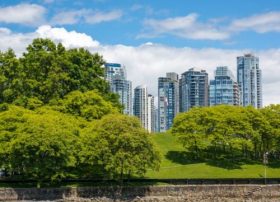
 Of course, sustainable development also applies to local authorities. Since the Earth Summit in Rio de Janeiro in 1992, they have had Agenda 21, and now the UN Sustainable Development Goals, as their tools.
Of course, sustainable development also applies to local authorities. Since the Earth Summit in Rio de Janeiro in 1992, they have had Agenda 21, and now the UN Sustainable Development Goals, as their tools.
The AFNOR group is at their side to help them master the notion of the sustainable city, or smart city, with the right tools: voluntary standards (ISO 37101, ISO 37104, ISO 37120, ISO 37122, etc.), AFNOR Compétences training courses, assessments and certifications such as AFAQ Circular Economy.
From ecological transition to energy transition
A sustainable development policy, whether corporate or local, must also include a biodiversity component. The stakes are high: mankind is going through the worst phase of species extinction in a very short geological timeframe, and it’s his own fault. AFNOR’s job is to define indicators, a common vocabulary and project management methods, to train specialists, and to distribute signs of recognition attesting to the rigor of a biodiversity preservation policy. You can find detailed solutions here.
Finally, another ecological transition topic to include on the menu of your sustainable development policy: energy, which in fact transforms this concept into energy transition around three notions:
- Save energy by improving energy efficiency, i.e. by consuming less for the same use.
- Use low-carbon energies to reduce greenhouse gas emissions
- Give priority to renewable energies, in the name of regional development, energy independence and diversification away from fossil and fissile energies.
